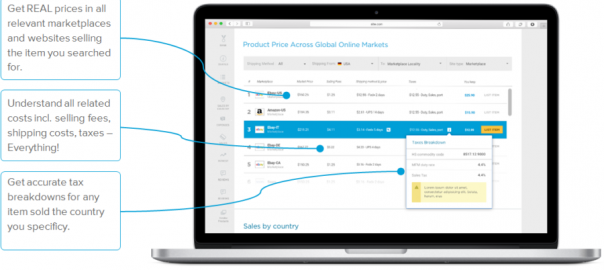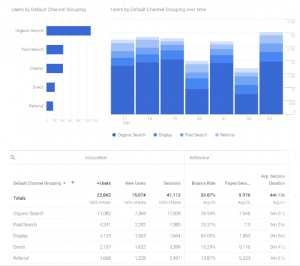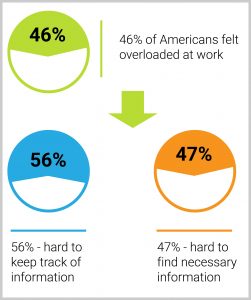— July 14, 2017

FirmBee / Pixabay
Here’s a scenario you might be familiar with: a quote you received from a supplier is generating virtual dust in your inbox. You haven’t addressed it because you still need to review your list of current inventory so you can determine what you’re going to offer in the new quarter. You haven’t made time to look into your inventory list because you know you’re dealing with overstock, and you’re not sure how to avoid it again the next time you go to source new products.
You have one big headache compounded by financial losses you’ve already suffered this year and you’re beginning to think to yourself, “maybe I’m not cut out for this ecommerce gig, after all…” Sound familiar? If so, you’re not alone. You’re actually one of many ecommerce merchants who are still using traditional approaches to determine what to source and where to sell it.
This traditional approach relies heavily on manual research work to uncover the competitive landscape for the products you’re offering, where these products currently are in their lifecycle, on which markets they’re most desired, and more. Unfortunately, in today’s ultra-competitive online marketplace, this outdated approach takes too much time and involves so many variables that it often ends up being a business-damaging guessing game.
One of the most painful consequences of this traditional approach is overstock. Overstock is a serious risk that can drive a blossoming ecommerce business to the ground. According to a study by IHL Group, in 2015 overstock cost retailers more than $ 1 trillion globally.
There are a number of reasons an ecommerce seller might be faced with an overstock issue. One of the most apparent is inaccurate product research that led the seller to believe that a certain product would reach its lifecycle peak just in time to for him to generate a sizable profit. Inaccurate competitor data is another popular reason for overstock, leaving a seller unable to offer a competitive price point for a sourced item.
Faced with overstock, sellers frequently miss out on other, more lucrative opportunities because they don’t have any spare funds available to invest. Moreover, to avoid future overstock, an ecommerce seller might employ the help of an analyst. But this time-consuming endeavor is also prone to human error when you consider the number of variables involved in accurately determining what products will sell on each marketplace. And overstock doesn’t just happen to novice ecommerce sellers, a point reaffirmed by the estimated global cost of $ 1 trillion annually.
In addition to overstock, ecommerce business owners also face a number of other consequences that arise from basing critical business decisions on educated guesses.
So with all of this risk, how can ecommerce merchants best avoid these costly situations? To answer that question, we need to first explore what information they need in order to make informed decisions that will give them the best chance of success.
The two most important factors behind accurate decision-making in ecommerce are:
- Product demand – indicates whether it’s worthwhile to carry a certain product from the perspective of how likely it is to sell it.
- Expenses – knowing exactly what costs will be incurred from selling products on certain marketplaces and in specific geographies to understand if you’ll be able to offer competitive pricing.
Now that we know what data is needed, let’s take a look at how an ecommerce merchant might go about manually obtaining the insights he needs on product demand and expenses.
Discerning Product Demand & Expenses
To understand whether a certain product is in demand, an ecommerce merchant must take into account all of the different sales channels like Amazon, eBay and others. The process of exploring the demand level for a certain item or type of item, differs somewhat across each of these channels.
For example, analyzing demand on Amazon involves looking at the product’s overall score and the number of reviews it has received. Based on its rank on Amazon’s catalogue, it’s also possible to get a rough estimate of how many people have purchased the item. The number of questions that have been asked about the product and the method by which it’s fulfilled (through Amazon FBA, for example) can also key indicators of popularity.
To garner demand on eBay, an ecommerce seller might look at eBay’s monthly sales volume per item. This indicates product sales volume in specific eBay markets and while this information isn’t directly accessible on eBay, it can be accessed through various online SaaS providers.
In addition, e-commerce sellers can use tools like Google Trends and Google Keyword Planner to understand the demand level for a product in a certain region. By configuring the search settings on Google Trends, for example, it’s possible to see how popular a search term was during a certain period of time and in a specific geographic location. This can be helpful to merchants who are considering seasonal items with sales that peak at specific times of year in different regions. Google Keyword Planner can also provide insight on monthly search volume for an item or a brand, as well as what the average Cost Per Click is for each keyword.
What ecommerce merchants must remember about identifying demand on different channels is that the scrupulous process of doing so needs to be completed anew for each different sales geography—because products that seem like they’ll perform well on one market, may not perform well on another. For example, an item that would do very well on Amazon US might not perform as well on Amazon UK because there simply isn’t the same level of demand on each market.
Enough about demand – what about expenses?
Before e-commerce sellers can understand whether or not they’ll be competitive while still making a profit, they must understand all of the related expenses they’ll incur. Additionally, they need to have accurate sales prices for every item they’re considering selling for each of the channels and regions they’re looking to sell. When obtaining sales prices, sellers must use product identifiers (e.g. UPC, EAN, ASIN or MPN) to ensure they’re looking at the right products. And, when exploring products on different online marketplaces, sellers will look at the highest-performing merchants with great feedback, using the rates of those merchants as reference points for selling price.
After discerning real selling prices, sellers must then factor in expenses to understand what the margins will be including:
- Taxes: Taxes have a huge impact on costs, especially when selling internationally since every country has different levels of taxes. Tax rates and import laws need to be accurately examined in order to truly understand how taxes will impact sales.
- Shipping costs: Depending on what kind of products being sold, shipping costs can vary greatly. For example, heavier items and more fragile items like televisions can be very costly to ship. On top of this, different online marketplaces have their own unique approaches for handling shipping expenses. They might add these expenses to the selling price, or charge end customers directly. Whatever channels a seller is considering, when exploring shipping costs, they always need to factor in the product’s weight and dimensions, and the buyer’s origin.
These two main cost categories don’t factor in additional fees like the ‘Final Value Fee’ that sellers incur by selling items on different channels. For example, on eBay, in addition to a Final Value Fee, there may also be insertion fees, supplemental service fees, and other fees specific to selling on eBay. With Amazon, selling fees include a referral fee and a closing fee, among others. Each channel will have different related fees and most marketplaces even have different fee structures for different categories of products.
If the process of determining demand and expenses wasn’t cumbersome already, consider that this research must be done uniquely for each product a seller is considering, for every channel they’re looking to sell on. To put it more directly, if a buyer is interested in taking on 150 new products that they want to sell on eBay US and eBay UK, they would need to perform this analysis on 150 products for two markets, or 300 individual research inquiries.
Automated Market Analysis
Luckily in today’s market, ecommerce sellers have access to technology that can perform this automated product market analysis at scale, saving valuable time and equipping them with accurate, real-time insights to make data-driven business decisions.
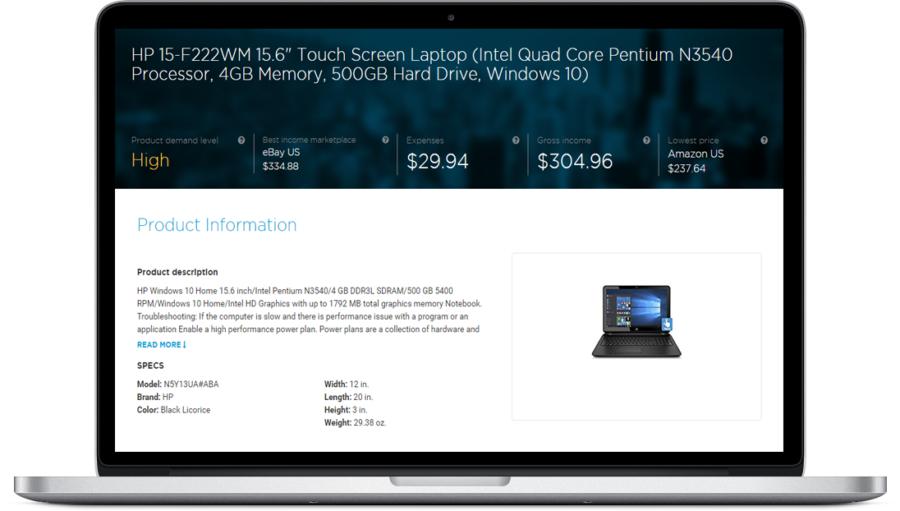
Using tools like Algopix, sellers can upload a price quote or a list of current inventory containing the items they want to research and within minutes, have delivered to them real-time data to help them make the best decision possible for their business. The information Algopix provides includes statistics on product demand, the price point of competitors, related selling costs, country-specific stats and more, for any channel in consideration. Algopix can also help sellers discover new opportunities in channels they may not have previously considered, helping them further expand their multichannel ecommerce business.
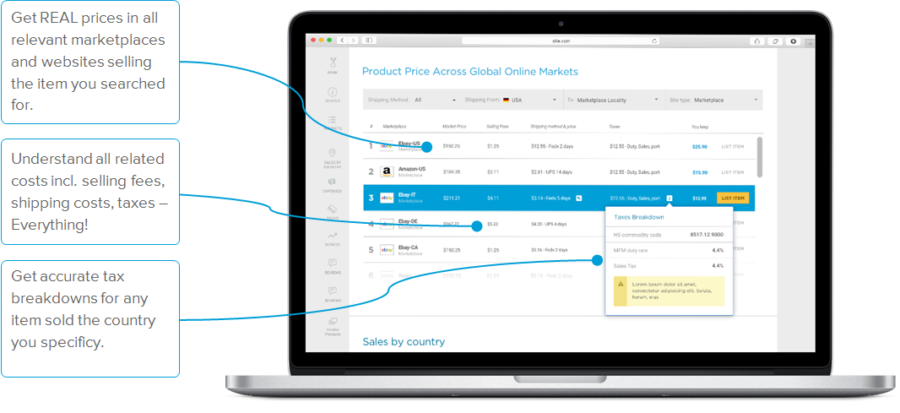
As an ecommerce merchant, it’s crucial to know what to sell and where to sell it. And when you’re managing a multichannel ecommerce business, you need to stay on top of your listings, inventory and orders in order to stay successful.
Digital & Social Articles on Business 2 Community
(86)
